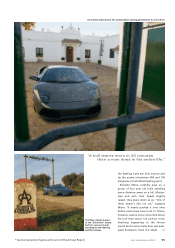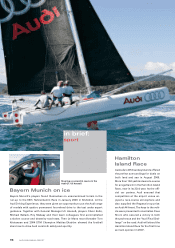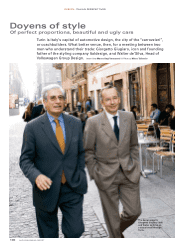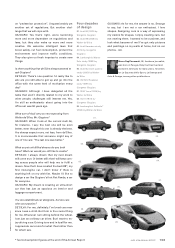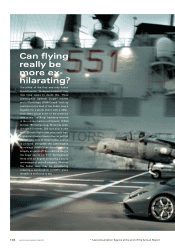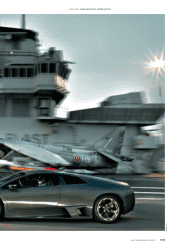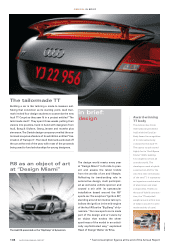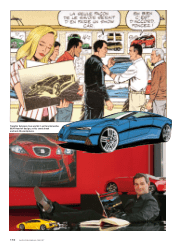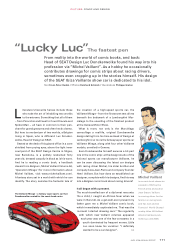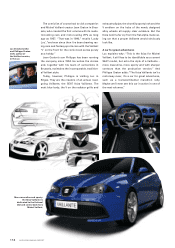Audi 2006 Annual Report Download - page 104
Download and view the complete annual report
Please find page 104 of the 2006 Audi annual report below. You can navigate through the pages in the report by either clicking on the pages listed below, or by using the keyword search tool below to find specific information within the annual report.
DESIGN: ITALIAN PERSPECTIVES
102 AUDI 2006 ANNUAL REPORT
not convinced by. And then we tend to arrive at
wrong, premature judgements. When I see a new
car, I always say: wait and see what it looks like
on the road.
DE’SILVA: I couldn’t agree more. Only when it’s
on the road can you tell what aspects of a car are
attractive or ugly, right or wrong. And you then
see it at first glance.
Are fashions sometimes too much to the fore?
DE’SILVA: It happens. But attractive cars will al-
ways remain attractive and survive short-lived
fashions. I remember two world-famous cars by
Giugiaro: the first VW Golf and the Lancia Delta. I
always greatly admired their proportions and
volumes. The longer you contemplated them,
the more attractive they became. The principle
remains equally valid today.
GIUGIARO: There are manufacturers who attach
greater importance to originality than to good
taste. But their innovations are short-lived.
Yet your creations must be long-lived. And as
designers, you are always anticipating future
trends …
DE’SILVA: Yes, of course. Developing a car takes
on average four to four and a half years. Our
clocks are always running fast, so to speak. The
customer never notices it, but our clocks are al-
ways set to summer time – the difference being
four years.
But how do you do that?
GIUGIARO: By applying logic. Because the differ-
ence is always in the dimensions, the curves are
dimensions. We merely have to keep a watchful
eye on the spaces that have to be filled; these
spaces are not the same ones as before. Even
though I can state rather selfishly that we do the
things that we like doing.
What do people expect of a car these days?
DE’SILVA: In such a mature sector as the car in-
dustry, customers want everything. But I think
more work is needed on the quality of cars’ inte-
rior equipment. Without resorting to too many
technical gimmicks.
GIUGIARO: People want everything, and more.
A low-slung sports car, a normal notchback
saloon, an SUV, an off-roader – they want some-
thing fantastic. People are spoiled. For instance,
quality and comfort are also important on
compact cars. Customers also expect compact
vehicles to be comprehensively equipped.
Sometimes things can get a bit exaggerated, for
instance if a computer and navigation system
are fitted simply to keep up with the competition.
But they are of course indispensable in premium-
segment vehicles.
But comprehensive electronic equipment is still
a positive.
DE’SILVA: Yes, of course. Even if we wanted to, it
would be difficult to scale back equipment levels
again. My youngest son is eight years old. He
has grown up with mobile phones and games
consoles. Whenever he gets into a car, the first
thing he checks is whether it has sat-nav. It’s
perfectly normal for him to want it used for
certain routes – he simply doesn’t think twice
about it. That’s what we call the “Playstation
generation”.
But the introduction of certain technologies
and the corresponding legal safety requirements
is also restricting the scope of designers.
Airbags for instance cause structural and space
problems.
DE’SILVA: I remember the debate about seat
belts and particularly airbags. When the first
airbags arrived, all the designers and planners
were wringing their hands asking: “Where on
earth are we going to put these giant things?”
We are now confronted with new requirements
“To assess
a car, you
have to
experience it
out on the
roads, along-
side others.
A car is
something to
be experi-
enced with
patience.”
Giorgetto Giugiaro





